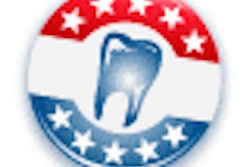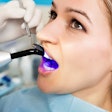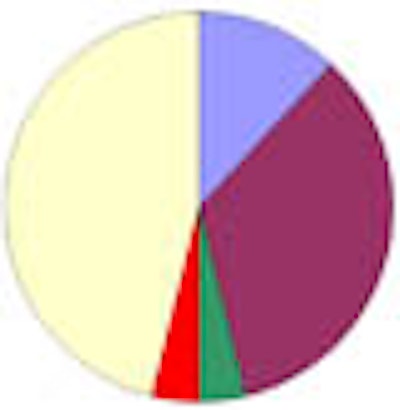
Dental care is the poor stepchild of the U.S. healthcare system. That's the frequent complaint of oral health advocates. And the latest government figures bear it out -- with little sign of the situation improving.
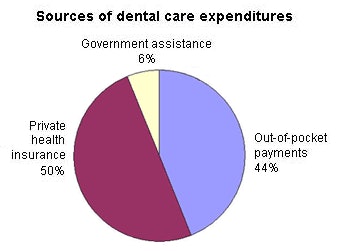 |
This month, the U.S. Centers for Medicare and Medicaid Services issued a report that lays out the past five decades of healthcare spending in cold, hard numbers. And those numbers give some clues about why so many Americans have inflamed gums and decayed teeth: while patients paid out of pocket for only 12 percent of their overall healthcare in 2006, they had to dig into their wallets for 44 percent of the cost of their dental care.
And while the government is paying an increasing portion of overall healthcare costs, its share of dental care hasn't increased significantly since 2001, according to these figures.
Altogether, the government foots 46 percent of the bill for healthcare in this country, it only pays for barely 6 percent of the dental care. The main reason is that Medicare doesn't cover dentistry. But the difference in Medicaid spending is striking as well; this ultimate safety net covers 15 percent of overall healthcare spending overall but pays for only a bit under 5 percent of dental care.
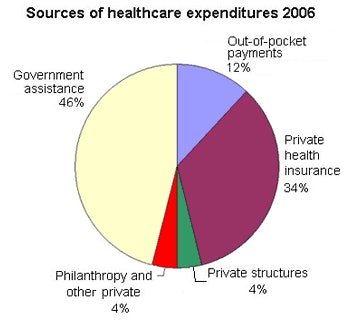 |
Can private insurance fill the gap? Perhaps. But that's not going to happen unless something alters the current trend. The role of private insurance in dental care rose dramatically from 1961, when it covered only about 1 percent of what Americans spent on dental care, to 1996, when it peaked at about 52 percent. Since then, it's gone into a slow decline, dipping below 50 percent in 2006.
These factors might help explain another trend: over the past five decades, dental care costs, have increased, but not by as much as general healthcare. Consider this: In 1961, Americans spent 7 cents out of every healthcare dollar on dentistry. Today, dentistry gets only about 4 cents of the healthcare dollar.
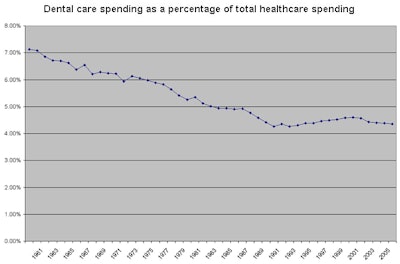 |





